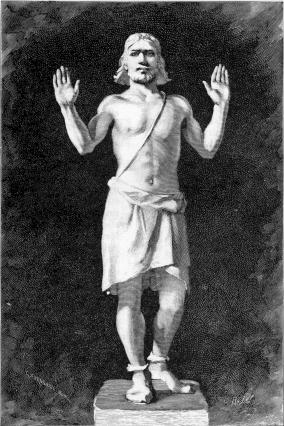Baldur (Old Norse Balder, Baldr) was the son of Odin and Frigg, and the god og light and joy. Universally loved by all, and seen as a shining light in a world sometimes thrown into darkness.
Among the many sagas and poems of Norse mythology, Baldur’s story is one of the most important ones. Through trickery and deceit, Loki orchestrated his death by the hand of the blind god Hodr. Setting in motion the events that would eventually lead to Ragnarok and downfall of the gods.
Baldur Key Facts
| Parents | Odin and Frigg |
| Partners | Nanna |
| Siblings | Thor, Hodr, and others |
| Offspring | Forseti |
| Tribe | Aesir |
| Old Norse name | Baldr |
| Other names | Balder, Baldr the Brave |
| The God of | Light, Purity, and Beauty |
| Ass. Animal | Swan |
Name and Etymology
The name Baldur, known in Old Norse as “Baldr,” is deeply rooted in ancient Germanic linguistics. The term “Baldr” translates to ‘brave’ or ‘defiant,’ but it also carries connotations of ‘lord’ or ‘prince.’ As such, Baldur remains in use as a Viking Age name for boys even in the modern age. While there are variations around what the meaning was, brave or bold might be the straightforward answer.
This etymology can be traced back to the Proto-Germanic term *Balðraz, which signifies ‘Hero’ or ‘Prince’. This term itself is derived from *balþaz, which embodies the essence of bravery. Various cognates of “Baldr” can be found across Germanic languages. For instance, in Old English, he is referred to as “Bældæg,” and in Old High German, he is known as “Balder” or “Palter.”
These names, in their respective languages, resonate with qualities such as boldness, valor, and leadership. For example, the Old Norse term “ballr” means ‘hard’ or ‘stubborn’, while the Gothic term “balþa” translates to ‘bold’ or ‘frank’. Similarly, in Old English, the term “beald” stands for ‘bold’, ‘brave’, or ‘confident’.
Kennings
Kennings add depth and richness to the narrative, allowing poets to convey meanings in a more evocative manner. In Skáldskaparmál, a section of Snorri Sturlusons’ Prose Edda, there a list of kennings for various gods, including Baldur.
For Baldur, the kennings found in the Skáldskaparmál are:
- Son of Odin and Frigg: Highlighting his divine lineage.
- Husband of Nanna: Emphasizing his singular love and devotion.
- Father of Forseti: Denoting his role as a progenitor and the virtues he passed on.
- Possessor of Hringhorni and Draupnir: Signifying his ownership of these significant artifacts.
- Adversary of Hödr: Reflecting the tragic conflict that led to his demise.
- Companion of Hel: Indicating his association with the realm of the dead.
- God of Tears: A poignant reminder of the sorrow his death brought to the world.
These kennings not only provide alternative names for Baldur but also offer insights into his character, relationships, and significance in Norse mythology. Personally I find that reading the kennings often provides me with more insight and clarity about how the different gods were perceived.
Ancient roots
The reverence for Baldur is not exclusive to Norse mythology. Older Germanic traditions also showcase traces of his legend, often portraying him as a god of light and purity. As for the origins of Baldur’s name, they have deep historical roots. Scholars, including Jacob Grimm (1835), suggest a connection to the Lithuanian term “báltas,” which means ‘white’ and associates with a light-god.
This progression from ‘white’ to ‘shining’ and then to ‘strong’ is linguistically plausible. Additionally, the Old English “Bældæg” can be interpreted as ‘shining day’, stemming from a Proto-Germanic root *bēl-, related to ‘fire’. This association with “day” is evident in continental Saxon and Anglo-Saxon traditions, where the son of Woden is referred to as “Baldag” or “Bældæg”, hinting at a deity personified as Day. Such interpretations align with the notion of Baldur as a “shining one” or a god of light, further supported by references to Slavic Belobog and German Berhta.
Baldur’s Origins
Born to Odin, the Allfather, and Frigg, the queen of the Aesir, Baldur was destined for greatness from the very beginning. As a member of the Aesir tribe, he was part of an elite pantheon of gods who ruled over Asgard. His lineage was both illustrious and complex, with a host of brothers, each unique in their attributes and tales.
Siblings
- Bragi: A deity of poetic brilliance, Bragi was Baldur’s half-brother and the god of eloquence and song, crafting tales that resonated with art and passion.
- Heimdall: Another of Baldur’s half-brothers, Heimdall stood as the vigilant guardian of the Bifröst bridge, renowned for his unparalleled senses and revered as the watchman of the gods.
- Hermod and Hodr: Both sons of Odin and Frigg, just like Baldur. Hermod was the valiant messenger of the gods, celebrated for his quest to Hel to try to retrieve Baldur. Hodr, on the other hand, represented the chilling embrace of winter and darkness. His blindness led him to play an unwitting yet tragic role in Baldur’s demise.
- Meili: A lesser-known sibling, and a half-brother to Baldur, Meili is associated with travel and exploration.
- Thor: The mighty god of thunder and protector of humankind, Thor, another of Baldur’s half-brothers, is famed for his confrontations with the giants and his iconic hammer, Mjölnir.
- Tyr: Representing war and justice, Tyr, a half-brother to Baldur, showcased unparalleled bravery, especially during the binding of the wolf Fenrir.
- Vali: Conceived with a singular mission—to avenge Baldur—Vali, another of Baldur’s half-brothers, epitomized swift justice and retribution.
- Vidarr: Often silent yet profound, Vidarr, a half-brother to Baldur, is linked with vengeance and is prophesied to endure beyond Ragnarok.
Baldur’s Family and Relationships
Baldur’s life was deeply intertwined with those he cherished, and his relationships were marked by genuine affection and loyalty. His singular love was Nanna, a goddess known for her grace and beauty. Nanna Nepsdóttir (Old Norse: Daughter of Nep) was herself an Aesir goddess, but nothing more is known about her parents. She was not just a symbol of elegance but also epitomized devotion and fidelity. Together, Baldur and Nanna exemplified the ideals of love and partnership in the Norse pantheon.
Children
Together, Nanna and Baldur had one son, named Forseti, the god of justice and reconciliation. Like his father, Forseti was revered for his wisdom and fairness. He presided over disputes, ensuring that justice was always served. Forseti’s hall, known as Glitnir, shone brightly with its silver pillars and golden roof, mirroring the virtues he inherited from both his parents.
Baldur’s Roles And Responsibilities
Baldur, often referred to as the “God of Light,” held a unique and revered position within the Norse pantheon. His very essence was synonymous with qualities like purity, innocence, and beauty. In the ancient manuscripts, Baldur was often depicted as the embodiment of righteousness and virtue, a beacon of hope in the often tumultuous world of gods and giants.
Among the gods, he played a pivotal role as a mediator and peacemaker. His untarnished reputation and benevolent nature often made him the go-to deity during disputes, ensuring harmony within the realms. His radiant presence did more than just symbolize joy; many believed he actively brought light and delight to Asgard, thereby making the realm even brighter and more vibrant.
For humans, Baldur was a symbol of hope and positivity. His tragic demise, as foretold by prophecies, was a poignant reminder of the transient nature of life and the inevitability of fate. Yet, even in death, Baldur’s legacy as a symbol of rebirth and renewal persisted, offering hope for a brighter tomorrow.
Interestingly, Baldur passed down his role as a fair mediator and beacon of justice to his son, Forseti. As the god of justice and reconciliation, Forseti not only inherited his father’s sense of fairness and wisdom but also actively presided over disputes. He ensured justice prevailed, further cementing Baldur’s virtuous legacy in the pantheon.
Depiction And Characteristics
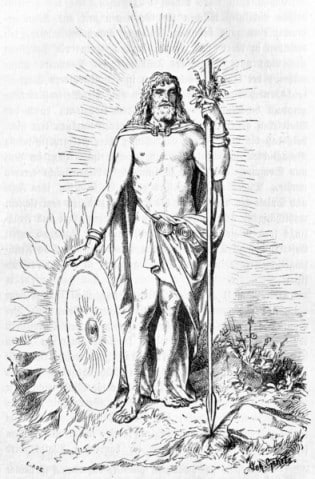
Baldur was often described as the fairest of all gods, with a radiance that outshone even the sun. His actions in myths further emphasized his benevolent nature; he was compassionate, kind, and always sought the best in others. However, his purity also made him vulnerable, leading to events that would culminate in his tragic end.
Baldur’s Symbols, Artifacts, and Associations
One of the most notable artifacts associated with Baldur is the colossal ship, Hringhorni. This ship wasn’t just any vessel; it was the largest of its kind, symbolizing Baldur’s grandeur and the vastness of his influence. Hringhorni played a pivotal role during Baldur’s funeral rites. In a heart-wrenching ceremony, Baldur’s lifeless body was placed upon this ship, which was then set aflame in a grand funeral pyre, signifying his journey to the afterlife.
Alongside Baldur on this ship was his horse, a loyal companion whose name remains unknown but whose significance is undeniable. This act was symbolic of the journey they would undertake together into the afterlife.
Additionally, during Baldur’s funeral, Odin, in a profound gesture of grief and respect, placed the ring Draupnir upon his son. Draupnir, a ring known to produce eight new rings of equal weight every ninth night, was not just a symbol of wealth but also of continuity and rebirth. By placing it on Baldur, Odin perhaps hoped for his son’s eventual return, echoing the cyclical nature of life, death, and rebirth in Norse beliefs.
These artifacts and symbols, deeply intertwined with Baldur’s narrative, offer insights into his significance, the reverence he commanded, and the profound sorrow his death brought to the gods and the realms.
Play Fun Norse Quiz
Is this article making you even more curious about Norse gods and goddesses? You can satisfy your curiosity by playing a fun Norse mythology quiz. This way, you can test your knowledge about Norse gods and goddesses, as well as fill in some gaps. Good luck and have fun playing!
You might be interested in this fun game too! It reveals the parentage of Baldur and other sons (and daughters) of Odin:
Don’t forget to try our other games as well!
Myths about Baldur
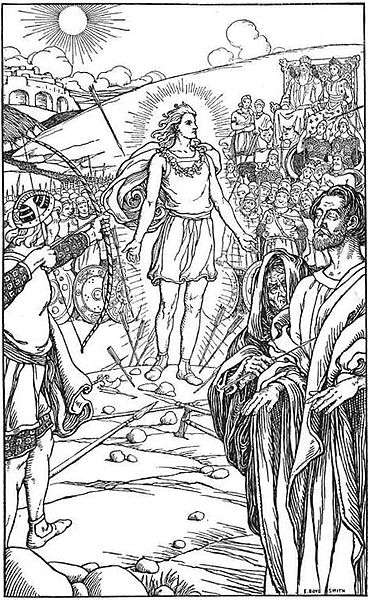
Baldur’s intricate narrative is illuminated through specific poems and texts that have, over centuries, preserved the essence of Norse mythology. These foundational works include:
- Vegtamskvida (Baldr’s draumar): Found within the “Poetic Edda,” this poem delves into Odin’s quest to uncover the meaning behind Baldur’s troubling dreams, leading him to the realm of the dead to consult a seeress.
- Lokasenna: Another gem from the “Poetic Edda,” this poem captures a flyting—a formal exchange of insults—among the gods, with Loki revealing uncomfortable truths, including references to Baldur’s fate.
- Völuspá: Often considered the most important poem of the “Poetic Edda,” Völuspá provides a sweeping overview of Norse cosmology, from the world’s creation to its destruction in Ragnarok, with Baldur’s death being a pivotal event.
- Gylfaginning: A section of the “Prose Edda,” Gylfaginning offers a structured presentation of Norse myths.
With these seminal works as our compass, let’s journey into the life of Baldur, exploring the dreams, prophecies, and events that shaped his destiny in the Norse cosmos.
Baldur’s Troubling Dreams
The narrative unfolds with Baldur’s unsettling dreams, more than mere nighttime visions, they were portents of a looming darkness. These dreams, referenced in several sources, depicted his impending death, casting a shadow of concern over the celestial realm of Asgard.
Odin’s Quest for Knowledge
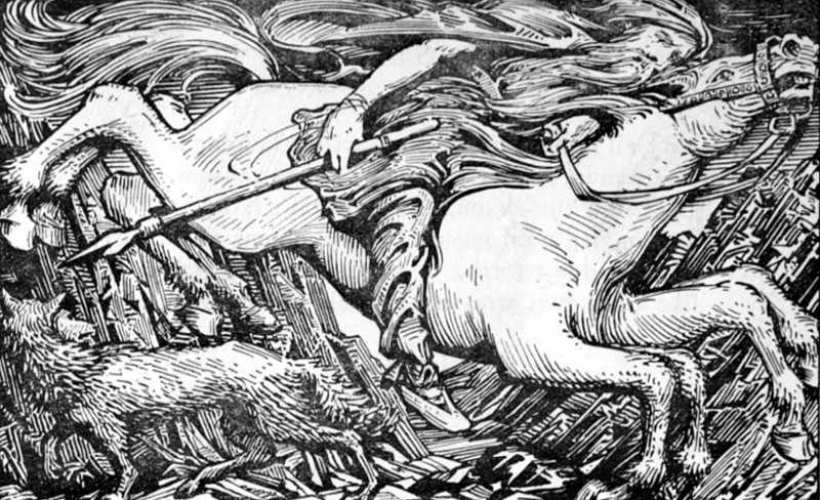
Seeking clarity amidst this foreboding, Odin, in the guise of Vegtam, ventured into the realm of the dead. His mission was clear: to consult a Volva, a seeress with the power to unveil the mysteries of the future. Near Hel’s gates, she revealed the tragic fate awaiting Baldur, a revelation that sent shockwaves through the divine community.
Frigg’s Desperate Attempt
In a bid to shield her son from this grim destiny, Frigg embarked on a mission. She traversed the nine realms, securing oaths from every entity, ensuring they would not harm Baldur. From the mightiest giants to the smallest pebbles, all vowed to spare him. Yet, the seemingly insignificant mistletoe escaped her notice.
Loki’s Deception and Baldur’s Fall
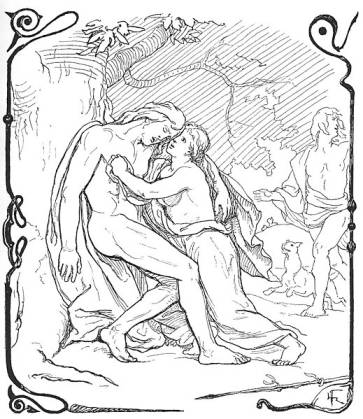
Loki, ever the agent of chaos, seized upon this oversight. Crafting a dart from the overlooked mistletoe, he manipulated Hodr, Baldur’s blind brother. Under Loki’s malevolent guidance, Hodr released the dart, resulting in Baldur’s tragic demise. This heart-wrenching moment, again immortalized in several sources stands as one of the darkest episodes in Norse mythology.
Baldur’s Ship Burial
Following Baldur’s death, the Aesir honored him with a grand and somber ship burial, showcasing his esteemed position among them. They placed Baldur’s body on Hringhorni, the grandest of all ships. On him, Odin placed his ring Draupnir. Beside him, Nanna, his devoted wife, lay. Grief-stricken, she passed away from sorrow and could accompany her beloved into the afterlife.
However, the task of setting the ship aflame proved challenging due to Hringhorni’s immense size. In this moment of need, the mighty giantess Hyrrokkin from Jotunheim came forth. With her unparalleled strength, she pushed the ship with such vigor that the ground quaked and the rollers beneath ignited. This act, though essential, incensed Thor. He was on the verge of striking down Hyrrokkin when other gods intervened, ensuring the sanctity of the ceremony remained intact.
Amidst the proceedings, a dwarf named Lit found himself in Thor’s path. In a spontaneous act, Thor kicked him, propelling him into the blazing pyre. As the flames consumed Baldur, Nanna, and Lit, the gods and all of creation mourned, marking a poignant farewell to the luminous god and his faithful consort.
Hermod’s Journey to Hel
Amidst the pall of grief that enveloped Asgard, Hermod, known for his valor, took action. Astride Sleipnir, Odin’s legendary steed, he descended into Hel’s cold domain. His goal? To negotiate Baldur’s release. Hel, ever the shrewd ruler agreed, but set one condition. Every being must weep for Baldur to secure his freedom.
The World’s Grief and Thökk’s Refusal
The realms responded with a deluge of tears. From gods to mortals, from mountains to streams, all mourned Baldur’s loss. Yet, Thökk, suspected to be Loki in disguise, remained unmoved. Her refusal to shed tears sealed Baldur’s fate, condemning him to remain in the underworld, accompanied by his faithful wife, Nanna.
Baldur’s Post-Ragnarok Return
But Norse tales are cyclical, with endings giving way to new beginnings. Post-Ragnarok, as the world emerges from ashes, Baldur is prophesied to return. Alongside Hodr, Vidar, and Vali, he will herald a new era, embodying hope and renewal, and underscoring the indomitable spirit of Norse mythology.
Mentions in Ancient Texts
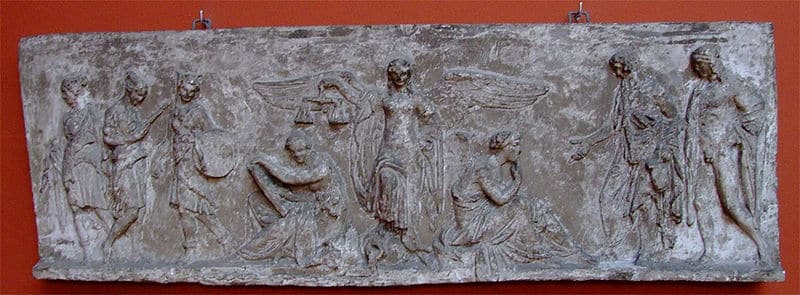
Norse mythology is rich with stories and legends, and two primary sources, the Poetic Edda and the Prose Edda, serve as our main sources. Within their pages, you’ll find detailed accounts of the gods, their adventures, and their fates. Baldur, often described as the beacon of purity and light, is a central figure in some of these stories. His story, marked by tragedy and hope, offers a deep dive into the complexities of the Norse pantheon.
Poetic Edda
Völuspá
The Poetic Edda, unlike the Prose Edda, refers to the tale of Baldr’s death rather than recounting it at length. In the Völuspá, the Völva, a seeress, provides visions of the past and future. One of her most poignant visions is that of Baldr’s tragic fate:
“I saw for Baldr, | the bleeding god, The son of Othin, | his destiny set: Famous and fair | in the lofty fields, Full grown in strength | the mistletoe stood.”
The Völva further elaborates on the aftermath of Baldr’s death, the birth of Váli, and the profound grief of Frigg:
“From the branch which seemed | so slender and fair Came a harmful shaft | that Hoth should hurl; But the brother of Baldr | was born ere long, And one night old | fought Othin’s son.
His hands he washed not, | his hair he combed not, Till he bore to the bale-blaze | Baldr’s foe. But in Fensalir | did Frigg weep sore For Valhall’s need: | would you know yet more?”
The Völva’s prophecies also hint at a time of renewal, where Baldr and Höðr will return:
“Then fields unsowed | bear ripened fruit, All ills grow better, | and Baldr comes back; Baldr and Hoth dwell | in Hropt’s battle-hall, And the mighty gods: | would you know yet more?”
Lokasenna
In Lokasenna, a poem centered around a flyting between the gods and Loki, Baldr’s purity is contrasted against Loki’s mischief. Frigg, Baldr’s mother, warns Loki of the consequences if she had a son like Baldr:
“You know, if I had a son like Balder, sitting here with me in Aegir’s hall, in the presence of these gods, I declare you would never come out alive, you’d be killed shortly.”[9]
Loki, unyielding, retorts, hinting at his role in Baldr’s tragic fate:
“You must want me to recount even more of my mischief, Frigg. After all, I’m the one who made it so that Balder will never ride home again.”
Baldr’s Dreams (Vegtamskvida version)
The poem Baldr’s Dreams delves into the ominous dreams that plagued Baldr, foretelling his death. The gods, concerned, convene to discuss these dreams. Odin, in his quest for knowledge, seeks answers from a Völva:
“Once were the gods | together met, And the goddesses came | and council held, And the far-famed ones | the truth would find, Why baleful dreams | to Baldr had come.”
Prose Edda
Gylfaginning
In Gylfaginning, Baldr is described as a beacon of purity and light. His appearance is so radiant that it’s likened to the brightness of the whitest of grasses. He is described as wise, fair-spoken, and gracious, with judgments that none can gainsay. He resides in Breidablik, a place in heaven where nothing unclean can exist.
The Prose Edda provides a detailed account of Baldr’s tragic death, a prophecy that foretold it, and the events that led to it. Loki’s mischief, the overlooked mistletoe, and the unwitting role of Höðr in Baldr’s death are all intricately detailed.
Skaldskaparmal
The aftermath of Baldr’s death, the ceremonial burning on his ship Hringhorni, and Odin’s whispered words to his son are all poignantly described in Skaldskaparmal. The grief of Nanna, Baldr’s wife, and her subsequent death add to the somber tone of the narrative.
The Prose Edda, in its prologue, also establishes a link between Baldr and the Anglo-Saxon Beldeg, further emphasizing the widespread influence and reverence of Baldr in various mythologies.
Final Thoughts on Baldur
Much is made out of his role as the shining god, or being a god of great pureness of heart. However, these associatetions have few, if any, actual examples. All the stories where Baldur plays a part are inexplicably linked to the events immediately before or after his death.
Personally I never really liked Baldur all that much. He is a passive passenger in his own lifes’ tragic arc. He is wholly unable to do much himself, instead it is his mother who tries to save him from his fate.
I understand his role more as a catalyst for setting up the conditions where Ragnarök can come to be. Withouth his arranged accidental death by Loki, who manipulated Hodr, Loki would likely still wander around Asgard. Certainly he was seldom up to much good, but it was Baldurs’ death that brought about the harsh punishement of Loki. That in turn made him finally attack the Asgardians’ when he had the chance.
Maybe the moral of the story of Baldur is that neither you nor I can escape our fates, whether we try or not. Better to lean into it and make the best of what you’ve got!
Frequently Asked Questions
Baldur and Thor were both sons of Odin, making them brothers.
Baldur is often referred to as the god of purity, light, and beauty. His radiant appearance and virtuous nature made him beloved by all the gods.
Nanna, Baldur’s wife, was overcome with grief upon seeing Baldr’s corpse. Her heartbreak was so profound that she died of sorrow. She was then placed on the funeral pyre alongside Baldr.
Baldur was killed by an arrow (or spear) made of mistletoe, the only thing that could harm him. This act was orchestrated by Loki, and the weapon was unwittingly wielded by Baldur’s blind brother, Höðr.
Yes, according to Norse prophecies, Baldur will be reborn in the new world after Ragnarök. He will be reconciled with his brother Höðr, and rule the new earth together with Thor’s sons.
Gallery
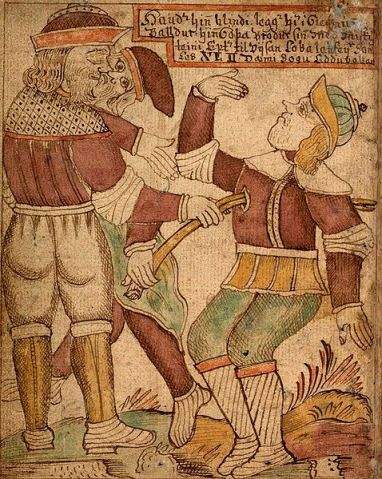 Baldr getting killed by Höðr and Loki
Baldr getting killed by Höðr and Loki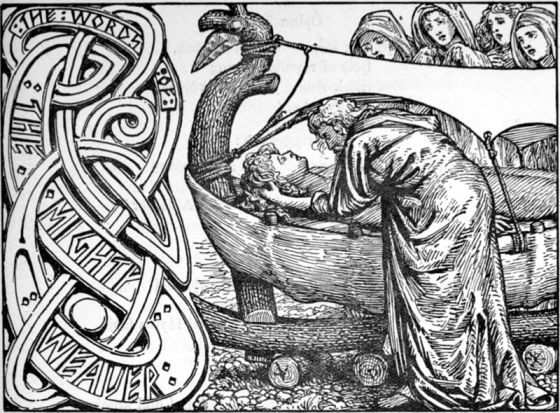 Odin’s last words to Baldr (1908) by W. G. Collingwood.
Odin’s last words to Baldr (1908) by W. G. Collingwood.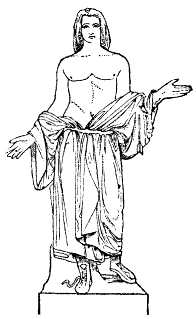 Baldur: The god of light
Baldur: The god of light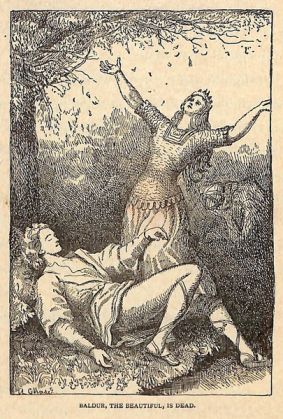 Baldur the beautiful is dead
Baldur the beautiful is dead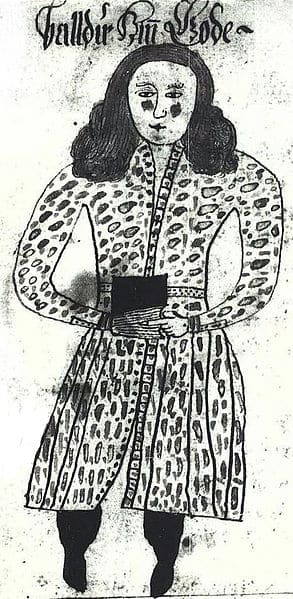 An illustration of the Norse god Baldr, from an Icelandic 17th century manuscript. A scan of a black and white photography.
An illustration of the Norse god Baldr, from an Icelandic 17th century manuscript. A scan of a black and white photography.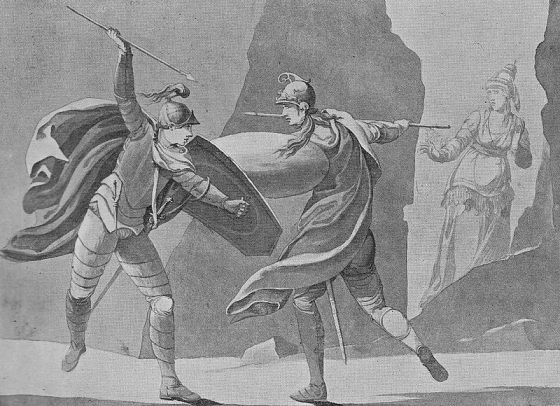 Balder and Hother fight while Nanna watches. A scene from Ewald’s 1775 play, Balders død. Act I, Scene 8.
Balder and Hother fight while Nanna watches. A scene from Ewald’s 1775 play, Balders død. Act I, Scene 8.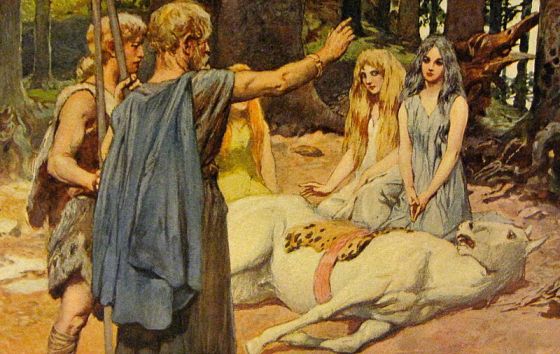 A depiction of the “horse charm” Merseburg Incantation. Wodan heals Balder’s wounded horse while three goddesses sit, while Balder watches.
A depiction of the “horse charm” Merseburg Incantation. Wodan heals Balder’s wounded horse while three goddesses sit, while Balder watches.
Featured Image Credit: Friedrich Wilhelm Heine (1845-1921)., Public domain, via Wikimedia Commons

